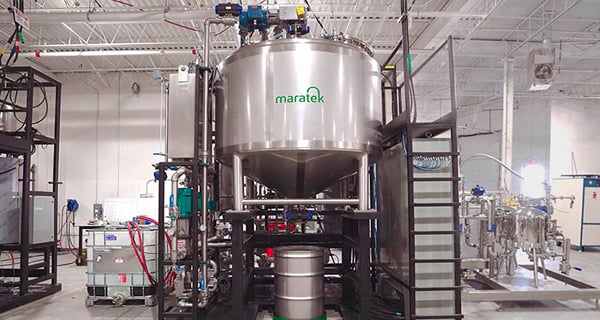3 Important Factors to Improve Solvent Recycling Efficiency
 Over the past few decades, the manufacturing industry has seen the introduction of solvent recycling technology. But what should your organization look for when purchasing solvent recycling
Over the past few decades, the manufacturing industry has seen the introduction of solvent recycling technology. But what should your organization look for when purchasing solvent recycling
In this blog, we take a look at the three most important factors to consider when looking at ways in which you can improve your solvent recycling efficiency with the implementation of new equipment.
What are Solvents and Solvent Recycling?
Solvents are chemical compounds that dissolve a solute to create a solution. Some examples of solvents include xylene, IPA, ethanol, acetone, and more. These solvents are used to make products that help individuals with their everyday lives or benefit businesses operations, such as hand sanitizer, paint thinner, and concrete.
Solvent recycling was developed in the early 2000s as technology improved and expertise increased, particularly in manufacturing industries that involve solvents.
Solvent recycling is a process that involves using a simple distillation process to reuse processed solvents, saving costs, reducing environmental waste, and conserving storage space.
Solvent recycling has been proven to save thousands of dollars every year, with new innovations introduced each year to improve the efficiency and quality of recycled solvents. Manufacturing industries in the printing, paint, cement, and personal care business use these machines every day, with the recycled solvent appearing as brand new.
Critical Solvent Recycling Efficiency Factors
So, when looking to implement new solvent recycling equipment that will increase your solvent recycling efficiency, what should your organization look out for? Here are some key factors that impact efficiency:
Simple vs Fractional:
The efficiency of solvent recycling depends on the specifications and hardware of the machinery. However, different methods of solvent recycling may be more efficient for some solvents than others. The two main methods of solvent recycling are simple distillation and fractional distillation. Both methods aim to purify and separate waste from solvents to preserve them. The main difference between the two methods is that simple distillation is used to separate substances with a wide range of boiling points, while fractional distillation is used for substances with a smaller range of boiling points.
Automation and Continuous Recycling:
Another key factor in the efficiency of the recycling process is automation and continuous recycling options. Automation allows operators to easily change, adjust, and perfect the specifications to meet their specific needs. For example, automation can include adjusting temperatures, speed, or rotation. Automation can also include safety features that allow operators to excel at their job without the possibility of a hazard. Automation simplifies the job for operators, ensuring that production is continuous throughout all stages.
Continuous recycling is more efficient than batch recycling because, in batch recycling, the solvent waste must be split into multiple batches to complete the solvent recycling process. In continuous recycling, the solvent waste does not have to be split up into batches and can be done as one single batch. This ensures that the process is continued and that there is no wasted time in making or putting in other batches.
Volume Capacity;
The final major factor in solvent recycling efficiency is volume capacity. A higher volume capacity ensures that more wasted solvent can be processed at one time, which can save significant time. However, volume capacity must be determined by the expected amount of wasted solvent that will be recycled. It is important to understand your expected solvent waste as an excess amount of capacity leads to wasted costs of material. Vice versa, having an insufficient amount of capacity leads to repetitive filling making the process non-effective.
Why Solvent Efficiency is Important
Solvent recycling efficiency is a major concept for manufacturing industries because having a high level of efficiency can lead to cost savings, reduced carbon footprint, and higher-quality solvents.
Solvent recycling efficiency, however, is subjective as every company has specific needs to reach a goal. A company that manufactures over thousands of solvents may be okay with a slower process of solvent recycling compared to a company that produces over millions a day.
Want to learn more about how you can improve your organization’s solvent recycling efficiency? Get in touch with Maratek today.





